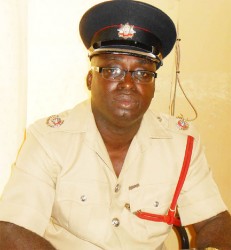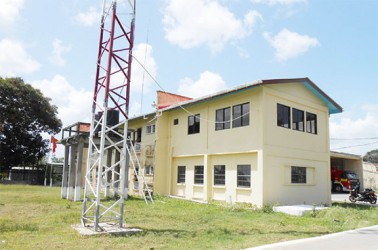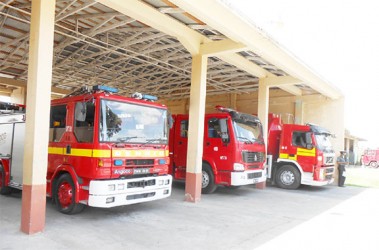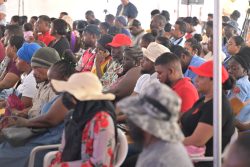The ‘B’ Division Fire Department of the Guyana Fire and Rescue Service has adopted a proactive approach to fire fighting that is, fighting fires before they occur.
Recognising the power of knowledge, the fire department has embarked on a sensitisation drive. Buildings of large occupancy within the district have been identified and targeted for the exercise. Fire fighters, especially those who comprise the ‘first strike’ team are visiting places of large occupancy to inspect and assess their fire fighting capabilities with the aim of providing tips on how to improve those capabilities and how best to use them in case of a fire.
Additionally, the initiative is providing fire fighters with the opportunity to learn the layouts of these buildings so as to formulate potential rescue strategies/scenarios in the event of a fire. Among the places being visited are the New Amsterdam Prison, hospitals, hotels and schools which have large occupancies, as well as companies such as Guyoil that store large quantities of fuel.

“The purpose of the sensitisation drive is to have members of the fire service stationed in this division understand the roles and functions of other organizations, specifically looking at certain facilities we consider high risk buildings – buildings of large occupancy,” Officer-in-Charge, Superintendent Compton Sparman stated. “We do training; we don’t wait until a fire occur to respond. So this is our proactive approach.”
The first building targeted was the New Amsterdam Hospital. During a scheduled inspection held last Wednesday, fire officers assessed the health institution’s fire fighting capabilities and explored options of evacuation in the event of a fire.

Sparman noted that “most of these institutions have internal fire fighting capabilities” which they employ in the event of a fire. However, “if the fire gets out of hand, they would summon the fire service”. As such, fire fighters need to have working knowledge of the layout of ‘high risk buildings’. “When we arrive there, we don’t want it to get out of hand in a sense that they are doing their own thing and we are doing our own thing.”
Thus if executed correctly, the sensitisation drive would see fire officers forging close ties with members of society and being able to work smoothly to save life and property from the destructive force of fires.
Focus on rescue
“The Guyana Fire Service is focusing more on its rescue aspect. It will be broader based so training will have to be intensified. Going to places will have to be a part of our programme expansion. We are working on fulfilling our 2013-2018 Strategic Plan,” Sparman disclosed. Elaborating further, he said “rescue will entail all aspects of rescue: pulling persons out of burning buildings and from vehicle wreckages; rescuing persons trapped in sewers; recovering persons lost in jungle like areas; rescuing animals from trenches, trees and so on… a man on the roof of a building attempting to commit suicide.”
The aim is to make rescue in its totality, the sole responsibility of the Guyana Fire Service.
The proactive approach adopted by the ‘B’ Division Fire Department is being implemented in three phases. The first phase saw fire officers receiving in-house training during the first quarter of 2014; while the second phase is currently

underway in the form of the sensitization drive and will last for the next three months.
The third phase will see the fire department hosting seminars to educate both employees of the private and public sector on the use and operation of fire extinguishers, the care and maintenance of firefighting equipment, and fire safety and fire prevention tips.
“This is what we call a proactive approach. Our personnel need to be trained and we need to be on the ball. We don’t want to wait for a situation to happen before we do something and everyone is running helter skelter,” Sparman declared.








